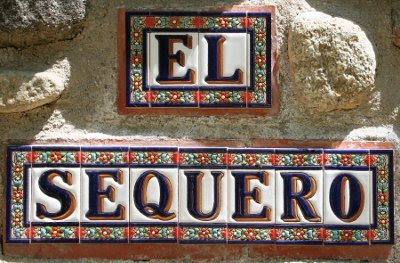2009 will go down as a dry year in Candeleda. According to one of my favourite sites
http://www.wunderground.com/weatherstation/WXDailyHistory.asp?ID=IAVILACA1
for the first 11 months of 2009 we only had 525mm of rainfall, normally we can expect 1200mm. Then along came December, especailly the last two weeks of December, while we have not managed to get to the 1200mm level we have at least filled our wells, which almost petered out this autumn. Normally we can expect about 100mm of rain in December, so far we have had 350mm.
In the old days when the fields surrounding our house where "productive" the local farmes used to irrigate their plots by flooding the land. This was facilitated by irrigation ditches which where constructed along the edges of the plots of land. These ditches are now generally dry I have only seen the one that bounds our land full of water on three occasions, the last time was in December 2006. Today the ditches are full the house is surrpunded by these little streams, as one of my neighours put it we live in the Candeledan version of Venice, a bit exagerated but nice anyway.
 This photo shows the stream which appears after heavy persistant rain, the ditch is not visible but is where the stream disappears at the pottom of the photo. While December 2006 was not an especially wet month, 117mm, it followed on from a wet November, 376mm
This photo shows the stream which appears after heavy persistant rain, the ditch is not visible but is where the stream disappears at the pottom of the photo. While December 2006 was not an especially wet month, 117mm, it followed on from a wet November, 376mmThe dam is also filling up. It's capacity is of 82 Hm3, by the third week of december it had 16Hm3 of water, this was well belowd the average, in just two weeks it has gone to 48Hm3, this is well above the average for the last 10 years. http://www.embalses.net/pantano-1085-rosarito.html







